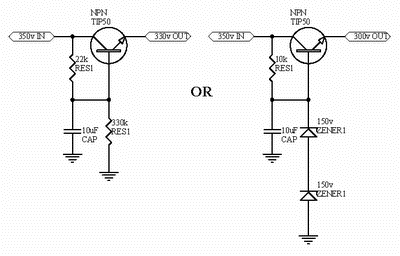Hi!
I'm trying to make best grounding scheme for my two stage tube preamp (built p2p). When i first fired it up it hummed a little, so i decided to try another ground scheme. What i have in mind is this:
1. Soldering pin 1 on input to the chasis with very short cable.
2. Tie wires from the input trafo -, cathode, decoupling cap and the rest of the first tube's ground connections together.
3. Run this wire to the second stage and repeat the same thing there, so all minus poles of both stages are connected together.
3. Make my CENTRAL GROUND near last filtering cap of my B+ supply and connect there B+ minus pole, phantom minus and - pole from the last tube.
4. I will leave pin 1 of the output connector floating.
5. Ground pin from Euro connector will be soldered to chasis with very short wire.
Can anyone please comment my plan? I don't know if - pole from B+ needs to be connected to central ground and also to the - pole of my audio ground on amp? I guess it doesn't matter.
Regards from Miha
I'm trying to make best grounding scheme for my two stage tube preamp (built p2p). When i first fired it up it hummed a little, so i decided to try another ground scheme. What i have in mind is this:
1. Soldering pin 1 on input to the chasis with very short cable.
2. Tie wires from the input trafo -, cathode, decoupling cap and the rest of the first tube's ground connections together.
3. Run this wire to the second stage and repeat the same thing there, so all minus poles of both stages are connected together.
3. Make my CENTRAL GROUND near last filtering cap of my B+ supply and connect there B+ minus pole, phantom minus and - pole from the last tube.
4. I will leave pin 1 of the output connector floating.
5. Ground pin from Euro connector will be soldered to chasis with very short wire.
Can anyone please comment my plan? I don't know if - pole from B+ needs to be connected to central ground and also to the - pole of my audio ground on amp? I guess it doesn't matter.
Regards from Miha














